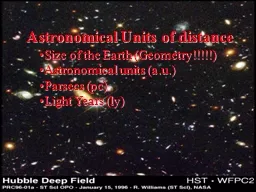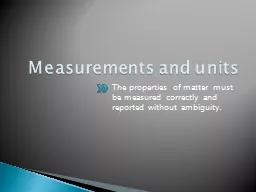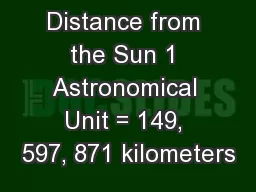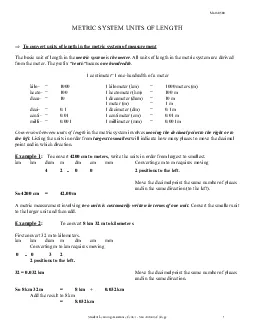PPT-Astronomical Units of distance
Author : yoshiko-marsland | Published Date : 2016-06-13
Size of the Earth Geometry Astronomical units au Parsecs pc Light Years ly Measuring Earth Geometry sr Two wells EW Measure s Time sun 2 t24 hr Measuring EarthMars
Presentation Embed Code
Download Presentation
Download Presentation The PPT/PDF document "Astronomical Units of distance" is the property of its rightful owner. Permission is granted to download and print the materials on this website for personal, non-commercial use only, and to display it on your personal computer provided you do not modify the materials and that you retain all copyright notices contained in the materials. By downloading content from our website, you accept the terms of this agreement.
Astronomical Units of distance: Transcript
Download Rules Of Document
"Astronomical Units of distance"The content belongs to its owner. You may download and print it for personal use, without modification, and keep all copyright notices. By downloading, you agree to these terms.
Related Documents














